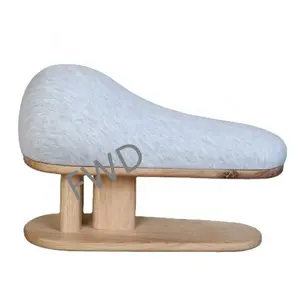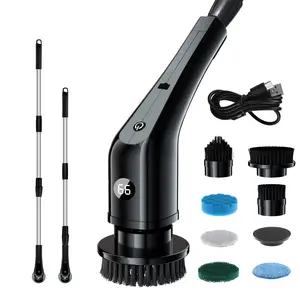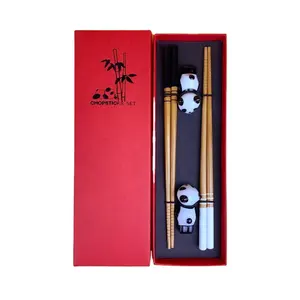Popular in your industry

















































Related Searches:

























































































































































Top categories
About atificial trees
Introduction
In the modern era, the appeal of artificial trees extends beyond the holiday season, becoming a stylish and eco-friendly choice for home decor. These trees, designed to mimic real species, offer a realistic look and feel, and come in various sizes and shapes to suit different spaces. Made from durable materials like PVC and polyethylene, they are low maintenance, reusable, and can even help reduce deforestation. This article delves into the world of artificial trees, exploring their types, materials, eco-friendly aspects, and their role as a stylish choice for modern homes. We will also guide you on how to choose the right artificial tree for your home.
Understanding Artificial Trees
Artificial Christmas trees are a popular choice for many households. They come in various sizes and shapes, allowing you to choose the perfect one for your space. The trees are designed to mimic real species, offering a realistic look and feel. They are made from materials like PVC and polyethylene, which contribute to their longevity. Artificial trees also come pre-lit, saving you the hassle of stringing lights. They are easy to set up, with features like hinged branches and built-in rolling stands. Moreover, they are low maintenance and can be reused for many seasons, making them an eco-friendly choice.
Types of Artificial Trees
Artificial Christmas trees come in various shapes and sizes, catering to different space requirements. They can be under 6 feet for homes with limited space, or over 15 feet for grand displays. The trees' shapes can range from slim and narrow for tight spaces to wide for larger areas. The level of realism in these trees is determined by the type of needles used, with some trees featuring a mix of PVC and PE needles for a more realistic look. They are also designed to mimic different species like fir, spruce, and pine trees, each with unique branch and needle characteristics.
Materials Used in Artificial Trees
Artificial Christmas trees are typically made from two main types of materials: PE and PVC. These materials are used to create both traditional and realistic-looking artificial trees. The higher the tip count of the tree, the fuller and more traditional the tree will appear. When choosing a tree online, it's important to examine the detail and quality of the branches closely.
The Eco-Friendly Aspect of Artificial Trees
Artificial trees, often made in China, are purchased by millions each season. While they contribute to carbon emissions due to their production and shipping process, they have a longevity that real trees don't. However, most artificial trees are not recyclable and end up in landfills. Despite this, they offer a reusable option for many years, reducing the need for annual deforestation. The choice between real and artificial trees depends on personal preference and environmental considerations.
Reduced Deforestation
Artificial trees can contribute to reduced deforestation. In the U.S., around 10 million artificial trees are purchased each season. These trees, unlike real ones, are not cut down from forests, thus preserving natural habitats. Moreover, artificial trees are reusable, meaning they can be used for many years, further reducing the need for tree cutting. However, it's important to note that most artificial trees are not recyclable and can end up in landfills, which is a significant environmental concern.
Longevity and Reusability
One of the most appealing aspects of artificial trees is their longevity. These trees can last for years, making them a cost-effective choice in the long run. Besides, they come pre-lit, assemble in three easy pieces, and store in a sturdy cardboard box. Although they eventually end up in landfills, their long lifespan and reusability make them a popular choice. However, it's important to note that they are non-biodegradable and remain in the landfill indefinitely once discarded.
Low Maintenance and Reduced Allergies
Artificial trees are a low-maintenance solution for those who love greenery but lack the time or ability to care for real plants. Unlike real trees, artificial ones don't require watering, sunlight, or any other form of upkeep. They're designed to look good without the need for constant care. Additionally, artificial trees are an allergen-free solution. Unlike real trees, they don't release allergens that might cause allergic reactions. This means you can enjoy the aesthetic appeal of greenery in your home without worrying about potential allergies.
Artificial Trees as a Stylish Choice
Artificial trees are a stylish choice for modern homes, offering a fresh touch without the need for constant upkeep. They blend seamlessly with various design aesthetics and can fill tight corners without overwhelming the space. These trees, whether it's a faux olive tree, a vibrant artificial Ficus, or a lush artificial Maple, are not only beautiful decor accents but also affordable. They come in different sizes, ideal for various spaces, and their pots often match other decor elements. From adding a vibrant pop of greenery to incorporating a touch of nature, artificial trees are a versatile and stylish choice.
Versatility in Design
Artificial trees are not just static decorations. They are living sculptures that can infuse life into any space. The fusion of nature with technology, sustainability with artistry, and functionality with aesthetics is what makes artificial trees an exciting frontier in B2B interior design. Their stunning aesthetics, adaptability, and innovative features make them an attractive choice for businesses that seek to create remarkable interior spaces. The collaboration of technology and artistic expression in artificial tree design will continue to transform the way we perceive and interact with our workspaces.
Year-Round Aesthetic Appeal
A small tabletop Christmas tree is one way of extending your theme to other areas of your home. These trees, like their larger counterparts, feature highly realistic foliage. For understated elegance, choose a tabletop Christmas tree with sparse foliage or options made with non-traditional materials such as glass and resin. These work well in small apartments and office spaces. A tabletop Christmas tree with lights adds a warm and inviting glow to any room. Perfect for your porch or lanai, some tabletop Christmas trees are safe for use in covered outdoor areas. Their small size makes them easy to transport and there’s no need for assembly, too.
Integration with Modern Home Decor
Artificial trees can seamlessly integrate with modern home decor, offering a fresh touch without the need for constant upkeep. They come in various styles and sizes, fitting any design aesthetic. For instance, a faux olive tree can add natural detail to a living room, while a faux maple tree can bring a touch of the outdoors inside. The pots these trees come in, whether simple white or textured cement, can also complement your existing decor. From filling tight corners to brightening up larger spaces, artificial trees are a versatile and stylish choice for modern homes.
Choosing the Right Artificial Tree for Your Home
Choosing the right artificial tree for your home involves considering size, shape, and realism. The height of the tree should leave at least 6 inches between the top and the ceiling. The shape should suit your space, with slim trees for tight spaces and wide ones for larger areas. The realism of the tree depends on the type of needles used, with polyethylene (PE) needles offering a more realistic look than PVC needles. You can also choose from different species and colors to match your home decor.
Size and Placement
Choosing the right size and placement for your artificial Christmas tree is crucial. The tree should suit your space and match your room's scale. Before purchasing, identify where you want to set it up and measure your area. Artificial Christmas trees come in various heights and shapes, so match them to your room's measurements. Allow 12 inches clearance between the top of your tree and the ceiling for a standard tree topper. Also, consider the space for your tree skirt and gifts. Remember, a small tree may get overlooked in a tall room, while a large one may make a compact room feel smaller.
Style and Color
When it comes to style and color, artificial trees offer a wide range of options. Flocked and frosted trees, for instance, provide a snowy, winter wonderland aesthetic. However, they may shed some of their snow over the years, so proper care and storage are essential. Tall, skinny trees are perfect for spaces with limited room, while classic green trees offer a traditional look. Illuminated trees, on the other hand, come pre-lit for convenience and a festive glow. Remember, the key is to pick a tree that matches your space and personal style.
Maintenance Considerations
Artificial trees require attention despite not needing watering or pruning. Regular cleaning is crucial to remove dust layers that accumulate over time. Use a soft, dry cloth or fiber duster for pre-lit trees, starting from the top and working your way down. For unlit trees, a vacuum with an upholstery bristle brush or crevice attachment can be used. Avoid hosing down or washing your artificial tree as it could damage the foliage or light connections. If mold appears, use a pressurized air compressor or a hair dryer on a low, cool setting to remove it.
Conclusion
Artificial trees have emerged as a versatile, stylish, and eco-friendly choice for modern homes. They offer a range of benefits, from reducing deforestation to providing an allergen-free solution. Their versatility in design and year-round aesthetic appeal make them a popular choice for both homes and businesses. However, while choosing an artificial tree, it's important to consider factors like size, shape, realism, and maintenance. Despite some environmental concerns, such as their non-recyclability and contribution to landfill waste, their longevity and reusability make them a viable alternative to real trees. As we continue to seek sustainable and stylish solutions for our homes, artificial trees will undoubtedly play a significant role.







































